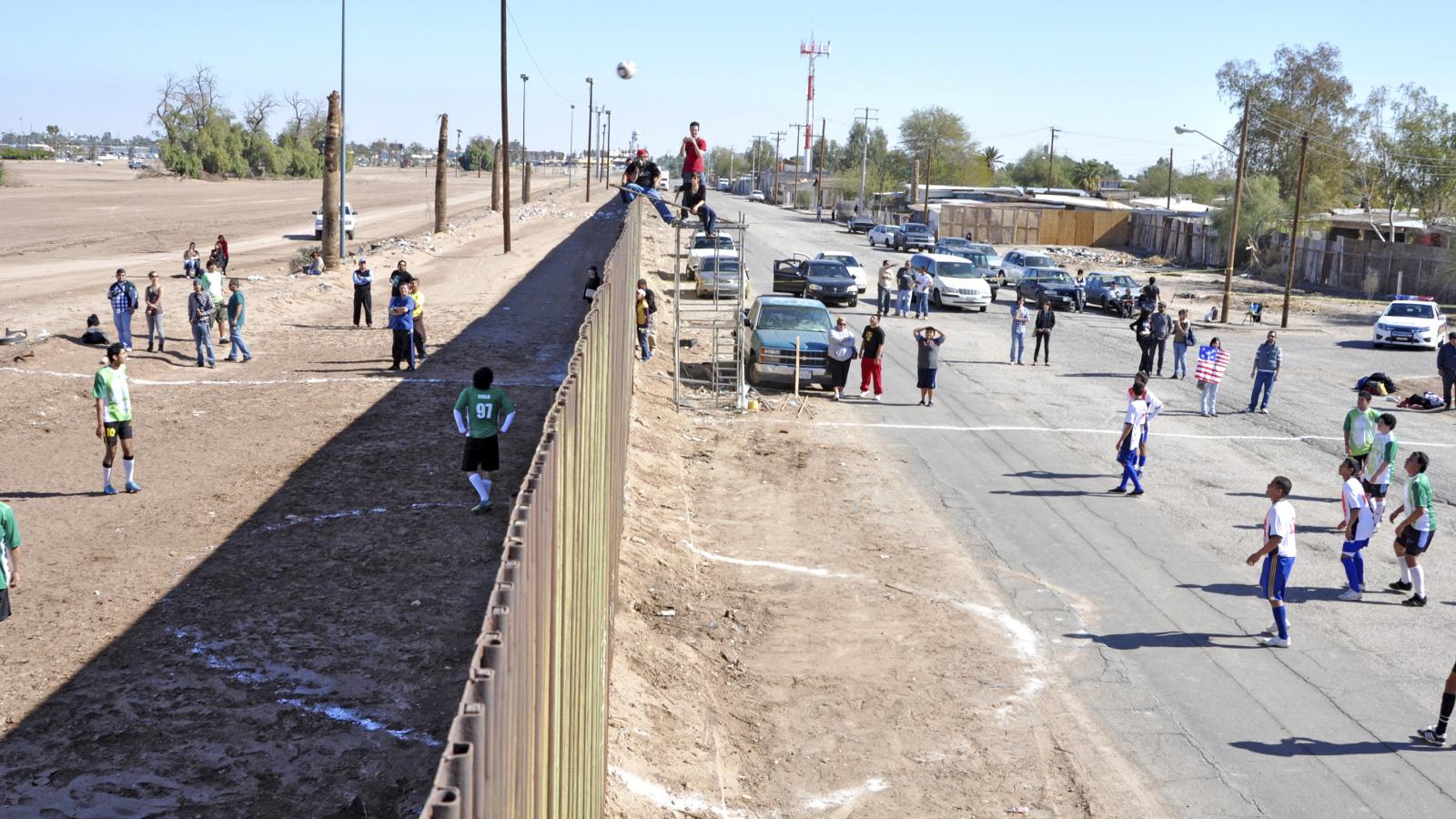Where some people see a steel border fence, Rosalía Romero sees a blank canvas. Where others see fields of lettuce and alfalfa, she sees art.
Romero, an assistant professor of art history at Pomona College, is a curator with the MexiCali Biennial, a contemporary visual arts organization that showcases art influenced by the California and Baja California region and created by its residents. The next MexiCali Biennial, The Land of Milk and Honey, will launch in September, and the program recently received a two-year $150,000 grant from the Mellon Foundation.
"The MexiCali Biennial started as an artist-run program, and a core value is to support the artists as best we can, to ensure that their projects can be completed and their vision materialized," says Romero. "Funding is going to help us on two stages: development and conceptualization. We have a lot of artists with an ambitious project in mind, and up until now we didn't have the resources to make that possible."
The Land of Milk and Honey will center around the concept of agriculture in California and Mexico, with the artwork touching on topics including labor, food security, environmental issues, farming practices, and food justice. A traveling exhibition, The Land of Milk and Honey will make several stops in California, including at the Santa Cruz Museum of Art and History and The Cheech Marin Center for Chicano Art and Culture in Riverside, and also hold panel discussions, artist lectures, and community-based workshops.
Since its founding in 2006, the MexiCali Biennial has always had a presence along the U.S.-Mexico border, having exhibitions and programs in Mexicali and the Imperial Valley. That's where Romero was raised, and her first exposure to the MexiCali Biennial came in 2009, when it organized a trans-border soccer game. The rusted metal border fence bisected the field, and the players had to kick the ball as hard and high as they could to keep the game going.
At the time, Romero was a senior at the University of California, San Diego who wanted to find a way to follow her passion for art while also diving deeper into questions she had about the border, her hometown and their identities. At the soccer game, Romero said it came to her that "this was what I wanted to do."
"I was surrounded by all of these artists and curators and historians and scholars who had the same questions that I did," she adds. "I realized I could do this. I could pursue this career and end up organizing things like this. It's really special for me that 10-plus years later, I find myself curating the next biennial."
At Pomona, Romero teaches a course on U.S.-Mexico border art, instilling a curiosity about the topic in her students. It is her hope that the works displayed in The Land of Milk and Honey also spark an interest in viewers, whether it's to learn more about how their food is grown or start researching the shared history of California and Mexico.
"Art has a way of changing perspectives, and the possibility of that for me is what it's all about," Romero says. "Art is able to show us the possibilities for engaging differently with each other."
The Land of Milk and Honey is co-curated by Ed Gomez, Luis G. Hernandez, and Enid Baxter-Ryce, with April Lillard-Gomez serving as project manager. For more information, visit the MexiCali Biennial website.
